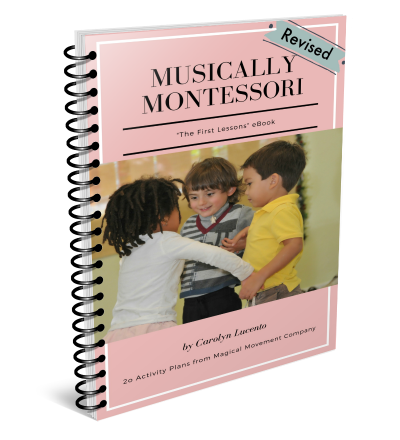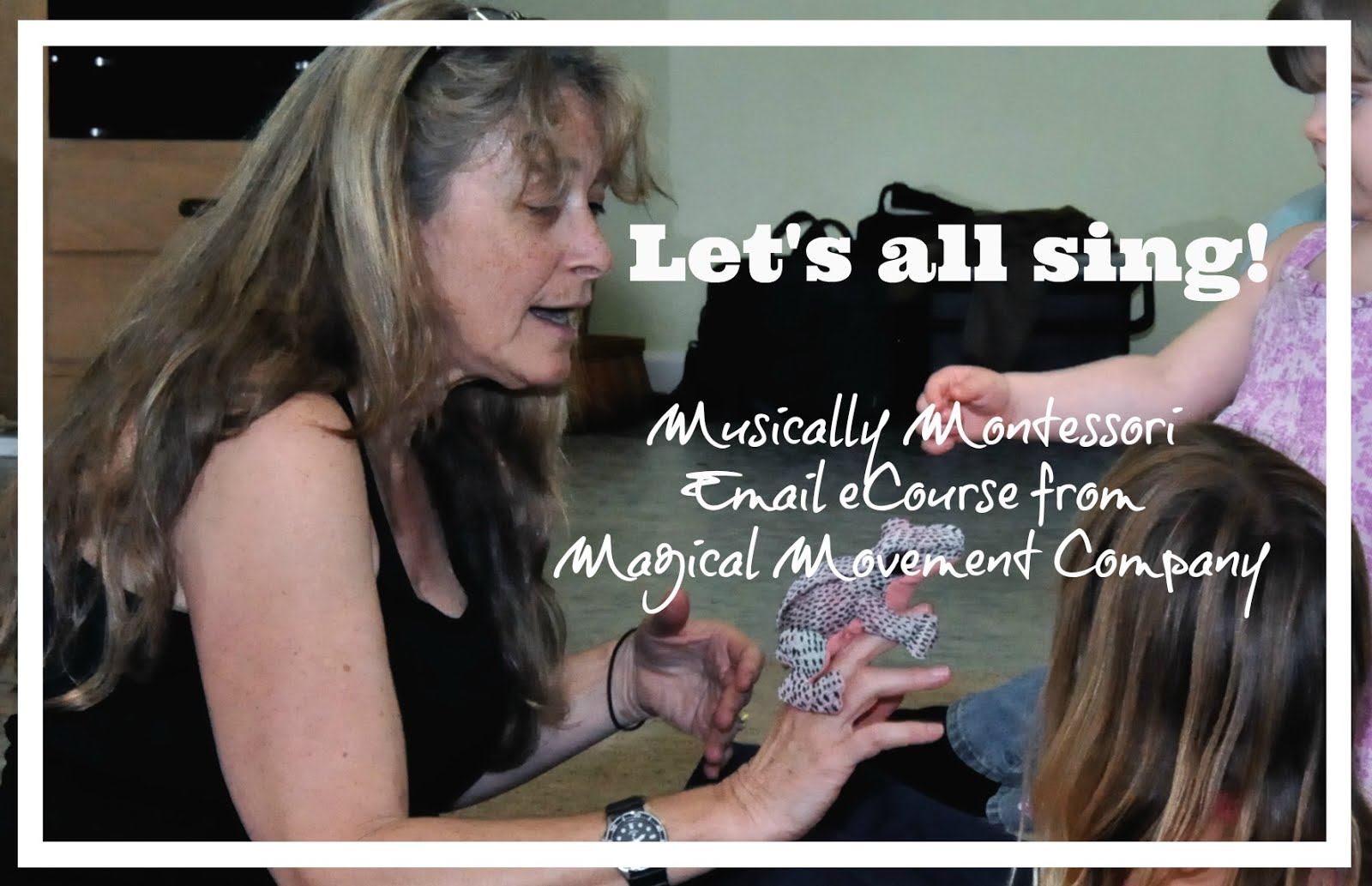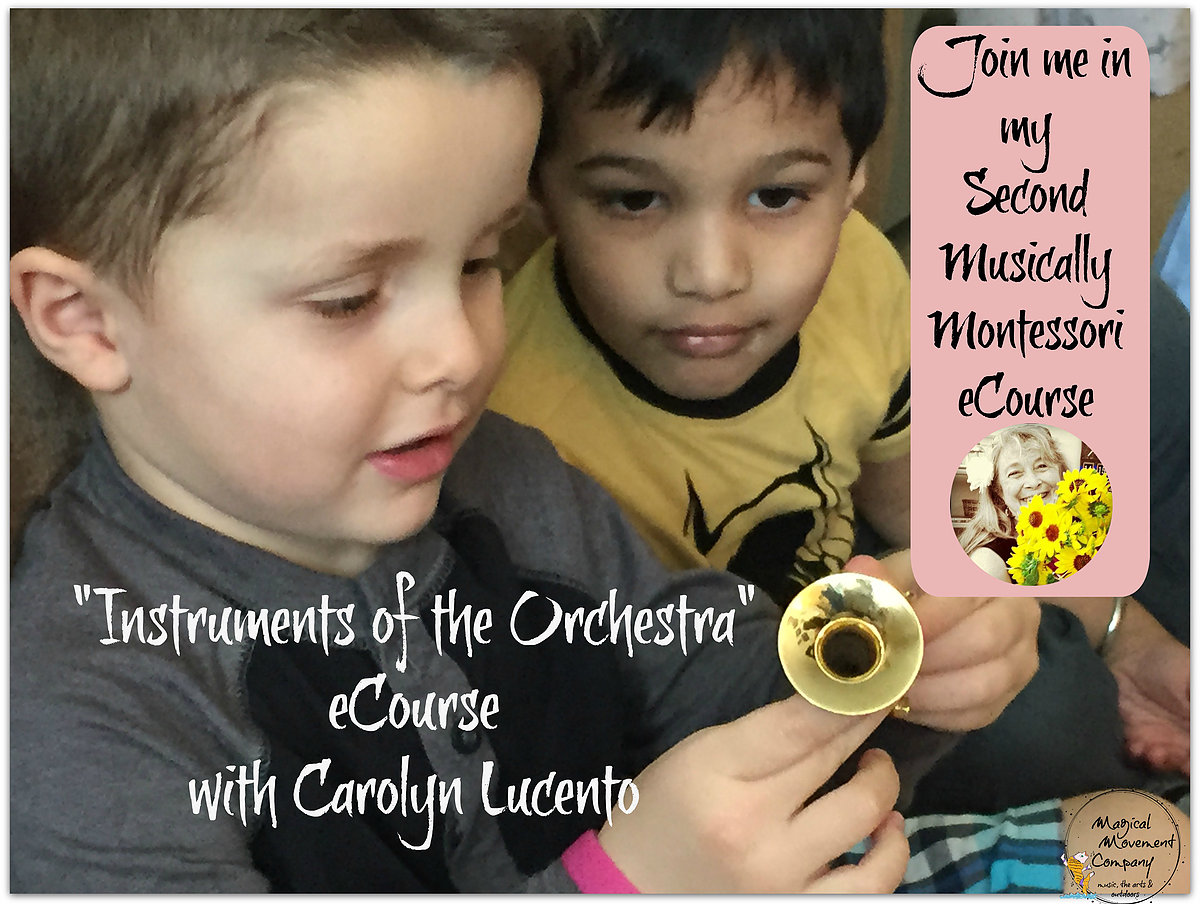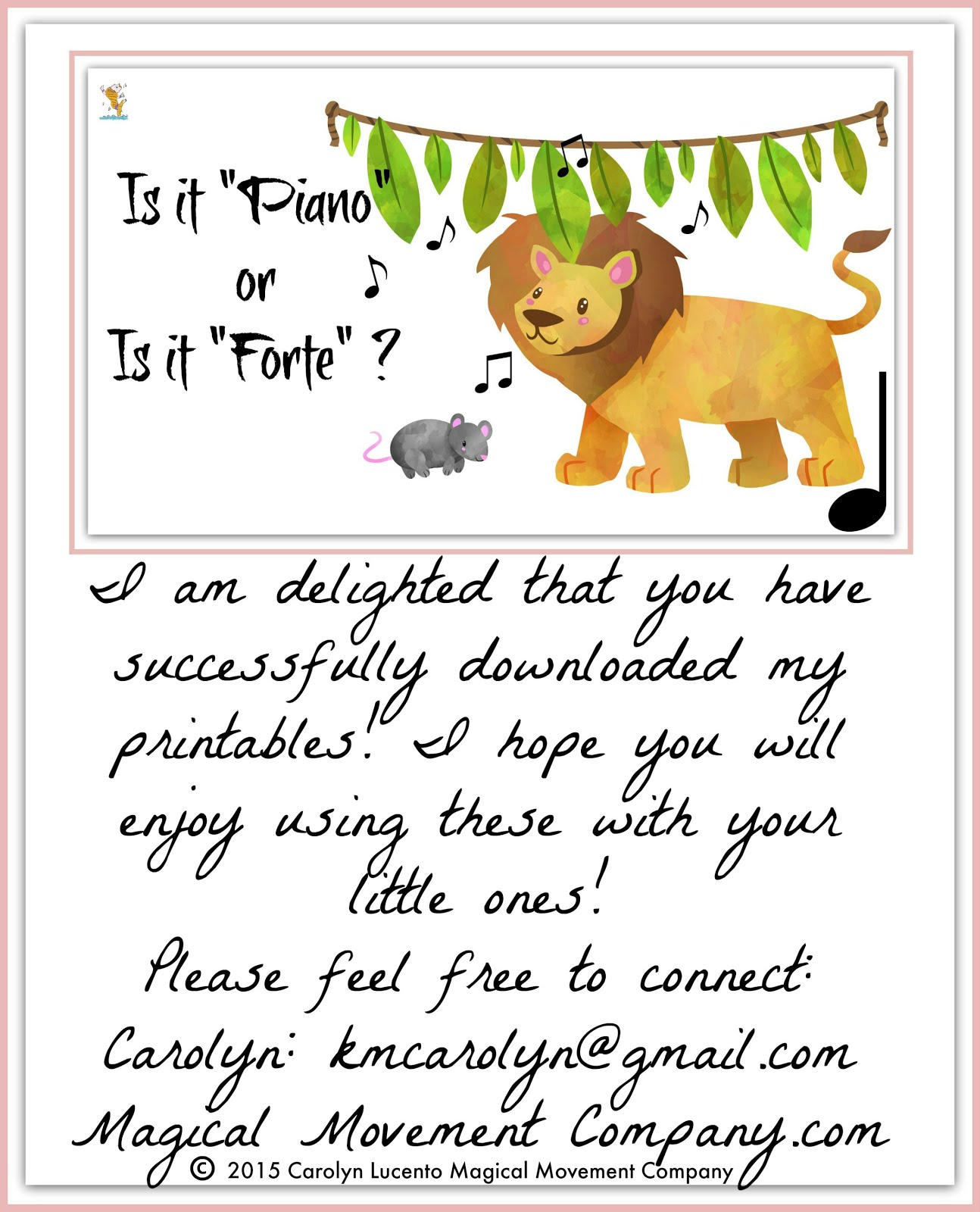MANAGING THE DAILY PROCEDURES IN A GROUP OF PRESCHOOLERS CAN HAVE A MAGICAL INGREDIENT...MUSIC!
Using music and songs can make your classroom procedures go along effortlessly and very proficiently. Singing is my magic wand for managing the everyday activities in the Montessori environment.
Using music and songs can make your classroom procedures go along effortlessly and very proficiently. Singing is my magic wand for managing the everyday activities in the Montessori environment.
This post is my musical group management article "Day 3," the third in my "24 Strategies" series.
You can read "Day 1" at this link.
You can read "Day 2" at this link.
Watch for "Day 4," coming up next!
You can read "Day 1" at this link.
You can read "Day 2" at this link.
Watch for "Day 4," coming up next!
Today's activities feature my musical ideas for reinforcing the daily routine activities that make a classroom move along smoothly.
*"Show...show...show"*
A little child's brain is like a sponge...an "absorbent mind." I think this is one of the most exciting things about teaching young children. As Montessori educators, we actually don't need to teach, as much as "show, show, show!" This little phrase was brought up many times during my Montessori training many years ago and, as a new teacher, I spent most of my days, showing and showing and showing. So, I decided to accompany all this "showing" with singing and I discovered that it works like magic!
DAY 3:
MUSIC FOR MANAGING DAILY ROUTINES
There are so many components of the Montessori method that incorporate the principles of order, concentration, coordination, and independence.
Montessori children take care of the environment themselves. Their tools are child-size and in good working order. Each activity has an organized sequence to follow. Classroom procedures are well-defined and designed in such a way that the children can perform them without adult assistance. Each child sets up their individual work on a designated work rug or mat. Then, it is that child's responsibility to return their individual work to its place on the shelf. Children are encouraged to respect others' work, and it is understood that each child is allowed to complete their activity before the next child has a turn.
Songs can make some of these daily procedures easier for children to remember and follow, like for example:
Montessori children take care of the environment themselves. Their tools are child-size and in good working order. Each activity has an organized sequence to follow. Classroom procedures are well-defined and designed in such a way that the children can perform them without adult assistance. Each child sets up their individual work on a designated work rug or mat. Then, it is that child's responsibility to return their individual work to its place on the shelf. Children are encouraged to respect others' work, and it is understood that each child is allowed to complete their activity before the next child has a turn.
Songs can make some of these daily procedures easier for children to remember and follow, like for example:
- Setting up the work rug or mat
- Waiting in line
- Waiting for a turn
- Washing hands and self care
- Cleaning up
- Maintaining the environment
- Preparing food and eating together
Strategy #10
"ROLL ROLL ROLL THE RUG"
I am surprised when I notice that very few classrooms teach the song, "Roll, roll, roll the Rug" to the children to remind them of how to successfully roll up a Montessori work rug.
When I was taking my second Montessori training in the 2000's, I learned this cute little musical trick for teaching children the technique of rolling and tapping the ends of the work rug.
The song is sung to the melody of "Row, row, row your Boat."
When presenting the lesson, the teacher is showing the children how to roll the rug while she sings the words of the song.
The rug rolling song uses these words:
"Roll, roll, roll the rug
Roll it nice and straight,
Tap the ends, tap the ends
Make sure that it is straight."
I love to sing this song whenever I see a child rolling up a rug. It is a delightful way to reinforce the lesson!
Strategy #11
"THIS IS THE WAY WE..."
"THIS IS THE WAY WE..."
Okay, there are a gazillion little actions throughout each day that keep the Preschool environment running smoothly.
Children must wash their hands, set up the snack table, sweep up crumbs on the floor, carry scissors, sit at circle, put away art work, scrub an art mat, put on an apron, cut a banana, carry a tray, hold a pencil...the list is endless!
When presenting the procedures for the various tasks that keep the classroom running smoothly, I almost always include a little song about the actions of the procedures. These songs can be short and sweet, or they can also have several verses.
For example, washing hands has many steps and I sing about each one when I give the first lessons to the children at Circle Time.
If you don't know the song, "Here we go Round the Mulberry Bush" then you are in for a treat! The simple melody of this song works beautifully with just about any set of actions you can think of!
Example: "Washing Hands Song" (to the melody of Mulberry Bush song)
While singing the words, the teacher is showing the children the actions by pantomiming (or actually doing it at the sink)
Verse 1:
"This is the way we wash our hands,
wash our hands, wash our hands.
This is the way we wash our hands,
so early in the morning.
Verse 2:
This is the way we turn on the water,
turn on the water, turn on the water,
This is the way we wet our hands,
so early in the morning.
Verse 3:
This is the way we pump the soap... (etc.)
Verse 4:
This is the way we rub hands together... (etc.)
Verse 5:
This is the way we rinse the soap off... (etc.)
Verse 6:
This is the way we turn off the water... (etc.)
Verse 7:
This is the way we dry our hands... (etc.)
Verse 8:
This is the way we throw away the paper towel... (etc.)
Strategy #12
BEFORE EATING: "Bon Apetit"
BEFORE EATING: "Bon Apetit"
Every early childhood environment I have seen, has a little procedure for eating together.
First, the children are encouraged to wait until everyone is seated with their food.
Next, there is a simple way of settling and getting quiet.
I like to sing a simple "Thank You Song" that is sung to the melody of "Rain, rain, Go Away."
Here are the words I like best: (sung to Rain, Rain song melody)
"Thank you, thank you
Thank you for the snack,
Thank you, thank you
Thank you very much!"
Then we say (as opposed to singing) "Bon a petit, you may eat!"
This little musical moment of centering before eating together quickly becomes a classroom tradition and aids the children in remembering to stop, wait for everyone to get their food, and then to quiet down before taking that first bite!
Strategy #13
TAKING TURNS: "We're waiting..."
TAKING TURNS: "We're waiting..."
Okay...we all know how trying it can be to have to wait! And, little children spend quite a bit of time waiting. At school, there is waiting in line, waiting for a turn, waiting to eat or waiting to go to the next activity. There are even times when it is so very hard to wait...like when the muffins are baking in the oven!
In my Montessori classroom music lessons, we sometimes have a special instrument that is passed around the circle for each child to try out. A few years ago, I discovered a sweet and simple little song to sing during times when children are having to wait for their turn to play that special instrument.
My groups love singing it. Check out my video below to hear the "We're Waiting" Song
You can easily change the words in the song to fit the situation. For example, we sing "We're Passing...passing...passing very carefully!" to remind the children to keep passing whatever object is being explored at group time.
Here's a fun suggestion:
Turn the waiting time into an activity by singing, "We're clapping, clapping, clapping while we wait in line..."!
So here we have a few more musical ideas for classroom management with a gentle touch!
Thanks once again for visiting my Blog today and I hope you are getting lots of ideas for musically managing your group in your Preschool environment!
Have you joined my email list? When you become a subscriber, you can access my Subscribers Freebie Collection (30+ downloadable resources, including my eBook!)
SUBSCRIBE TO MY EMAIL LIST
You can sign up on the side bar of this blog or scroll down to the end of this article if you are on a mobile device.
Photos are from Magical Movement Company archives and from Adobe Stock. All rights reserved.









































